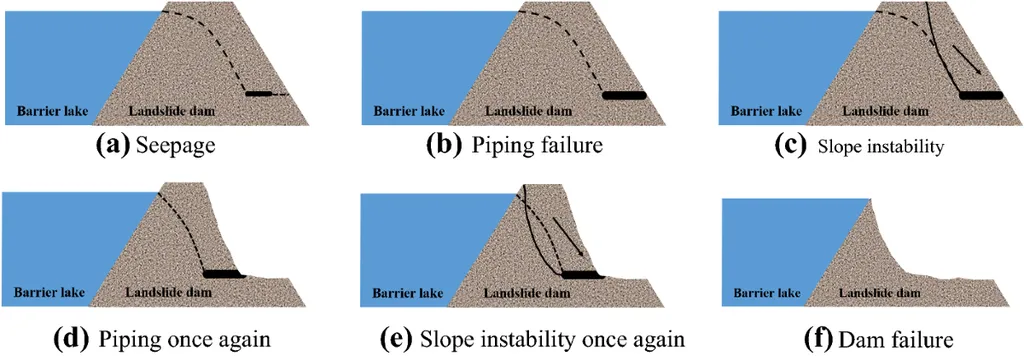In the world of dam engineering, understanding the mechanisms behind dam failures is crucial for designing safer, more resilient structures. A recent study published in *Yantu gongcheng xuebao* (Chinese Journal of Geotechnical Engineering) sheds light on the complex processes involved in the overtopping-induced breaching of concrete-face rockfill dams (CFRDs). Led by Dr. Zhao Kunpeng of the Nanjing Hydraulic Research Institute, the research delves into the intricate interplay of water, soil, and structural dynamics that occur during such failures.
The study, conducted through flume model experiments, reveals that the overtopping failure of CFRDs is a multifaceted process. It involves the continuous erosion of rockfill materials, intermittent instability of the breach slope, and multiple fractures of the suspended face slabs. “The breach development in the rockfill materials is a dynamic process,” explains Dr. Zhao. “It starts with tail cutting and head-cut retrogressive erosion, followed by side slope collapse and full cross-section erosion. This is accompanied by intermittent fractures of the face slabs, which significantly influences the breach hydrograph.”
The research highlights that in the longitudinal direction, the breach development is characterized by upstream erosion and downstream deposition, ultimately leading to riverbed stabilization. In the cross-sectional direction, the process is marked by retrogressive erosion, lateral erosion, and instability of the breach side slope, resulting in a splayed breach. The intermittent fractures of the suspended face slabs, caused by the continuous expansion of the breach size, lead to a multi-peak breach hydrograph. “The peak values of the hydrograph are important indicators for assessing the primary and secondary degrees of failure,” notes Dr. Zhao.
The findings of this study have significant implications for the energy sector, particularly for hydropower projects that rely on CFRDs. Understanding the mechanisms of overtopping-induced breaches can help engineers design more robust structures and implement better monitoring and maintenance strategies. This, in turn, can enhance the safety and longevity of dams, reducing the risk of catastrophic failures and ensuring the reliable generation of hydropower.
Dr. Zhao and his team’s work is a testament to the importance of interdisciplinary research in geotechnical engineering. By combining theories and methods from water-sand dynamics, soil mechanics, and material mechanics, they have provided valuable insights into the complex processes involved in dam breaches. This research not only advances our scientific understanding but also paves the way for more innovative and resilient dam designs in the future.
As the energy sector continues to evolve, the need for reliable and safe dam structures becomes increasingly critical. The insights gained from this study will undoubtedly shape future developments in the field, ensuring that CFRDs remain a viable and sustainable option for hydropower generation.

